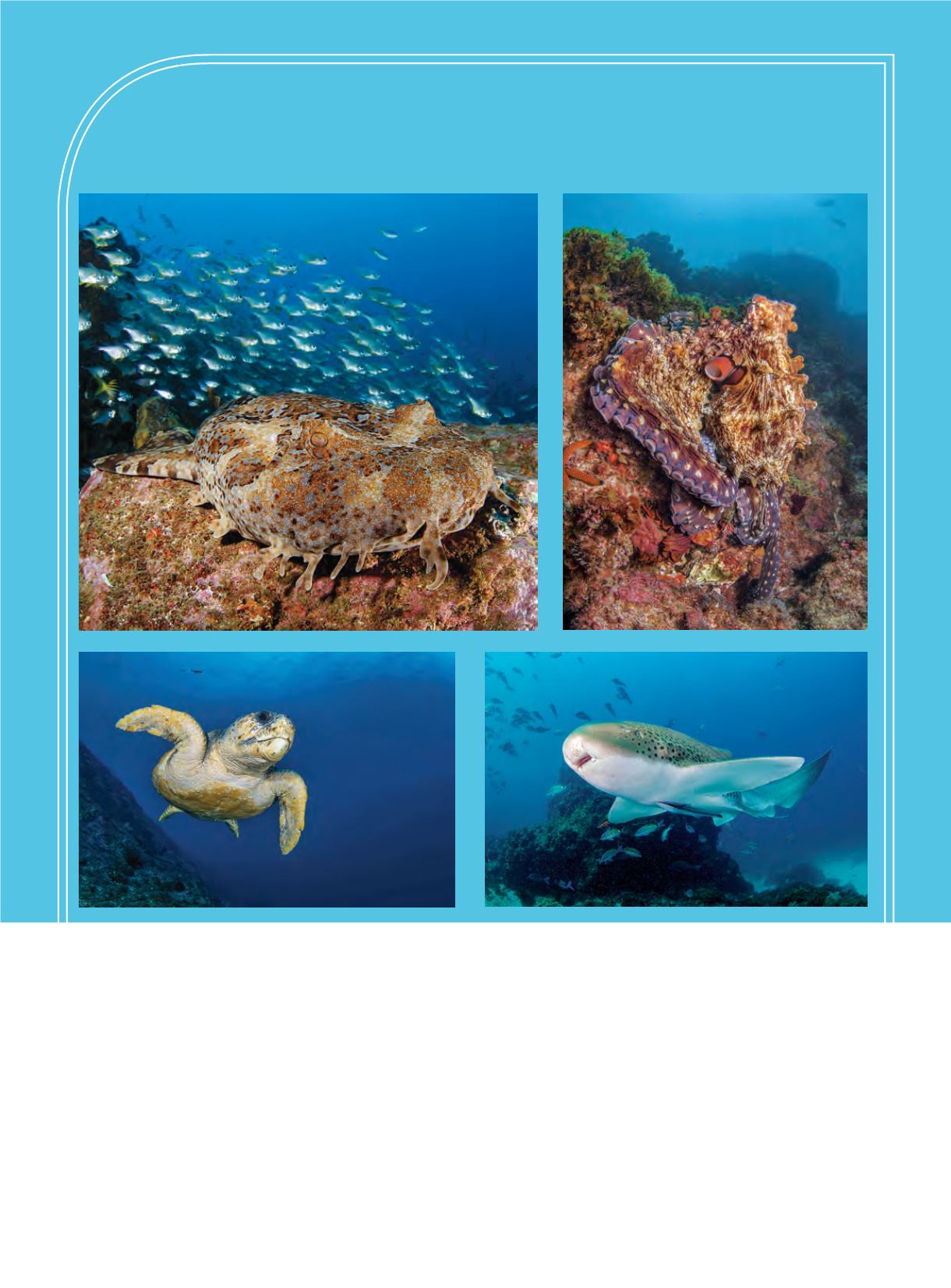

80
|
FALL 2016
here, a sponge-lined grotto stuffed with bullseye,
fortunately contains a face-forward wobbegong who
glares moodily at me as I photograph him.
The next morning the boat heads for Northwest
Solitary Island, a tiny spit of land only 18 miles from
the mainland. We moor in a shallow bay called
Lion’s
Den
, where mantas were sighted the day before our
arrival. Our first dive is manta-free, though certainly
pretty enough. The site is an easy 40-foot depth with
lots of hard and soft coral, busy schools of bullseye and
butterflyfish, and some truly beautiful green turtles.
Still — and I know it sounds petulant — I feel a little
ripped off: only a few gray nurse sharks up north and
weather-limited dive sites here. We want some mantas.
Thankfully, the universe agrees. We are halfway
through our second dive when the first manta shows
up; before long, we have seen five different ones. The
next three hours are total bedlam. A manta (or two
or three) is within sight at any given time. Soon we’ve
memorized them by size and coloration, and I have
chosen a favorite — a large melanistic beauty, with a
fractured wingtip, that follows me around like a puppy.
We make good use of all the extra air in the hold, only
calling it a day when the sun is low in the sky and every
Clockwise from top left:
A school of bullseye swirl over a resting wobbegong
shark at Fish Rock. An octopus busily hunts for its next meal at the Julian
Rocks Marine Reserve. A zebra shark passes overhead at Julian Rocks
Marine Reserve. A loggerhead turtle circles Fish Rock.
















